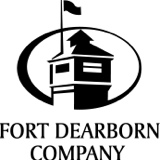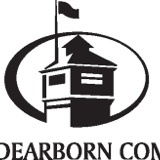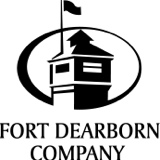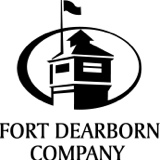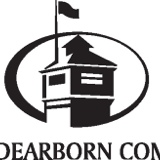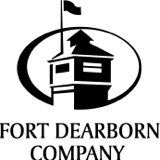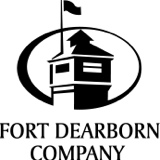Information
-
Document No. Release date 05-21-2013
-
This audit document is to be used to determine the adequacy of the plants quality, product safety, HACCP, and related programs to a BRC Low-Risk Packaging Standard (issue 4). Please include conformance and non conformance documentation during the audit. When completed review with the manager(s) of the department reviewed or the Quality Manager or General Manger if for a larger area.
-
Audit Title.
-
Client / Site
-
Conducted on
-
Prepared by Christine Rhodes
-
Location
-
Personnel
SECTION 1 Commitment and Continual Improvement
-
Does this unit cover Section 1
-
1.1.1 Product Safety Policy posted throughout facility?
-
1.1.2 Employees demonstrate understanding of product safety and quality policy?
-
1.2 FUNDAMENTAL The company's Senior Mgmt shall demonstrate that they are fully committed to the implementation of requirements of the BRC Packaging standard. This shall include provisions for adequate resources, effective communication and systems of management review to effect Continual Improvement. Opportunities for improvement shall be identified, implemented and fully documented.
-
1.2.1 Objectives for product safety & quality established and measurable?
-
1.2.2. System for keeping abreast of legislative, technical developments in place. (Technical group? Membership of Mgrs in different Associations?)
-
1.2.3. Final products comply with the relevant legislation in country of use. (Do we know where to be used?)
-
1.2.4. Non conformities identified at previous audit are effectively actioned. Review of CPAR Status and CA effectiveness
-
1.2.5 Current original copy of the BRC Standard is available on site
-
1.2.6. Recertification audits are scheduled to occur on or before due date stated on certificate
-
1.3.1 Organization chart is current
-
1.3.2 there is a designated representative and a back up for overseeing compliance to the standard
-
1.4.1 Management Reviews are held at a minimum of once per year
-
1.4.2. Agenda items include all areas of evaluation listed in quality procedure PRO 1.4
-
1.4.3. Records of the review and action items are documented
SECTION 2 Hazard and Risk Management System
-
Does this audit cover Section 2
-
2.1 Multidisciplinary team shows records of meetings on product safety and quality? Team leader is trained on HACCP principles. Outside expertise sought / required?
-
2.2 FUNDAMENTAL. The company shall establish the effectiveness of its prerequisite programs through a hazard and risk analysis and identify and implement controls for any further risks to the safety and legality of products.
-
2.2.1 Scope covers all products and processes. Clearly defined?
-
2.2.2 Risk assessment takes into account historic data, relevant codes and guidelines, legislative requirements<br>
-
2.2.3 Full description of product and its intended use is documented
-
2.2.4 Process Flow diagram is current? Includes all steps from receipt of raw materials through production and returns from customer? Verified by HACCP Team?<br>
-
2.2.5 Product Safety Team has identified any new or changed hazards and analyzed for risk since last audit?<br><br>
-
2.2.6 Control measures identified to reduce hazards to acceptable levels?
-
2.2.7 Control points have been reviewed to evaluate if prerequisites are effective in providing control?
-
2.2.8 HACCP Program is reviewed and evaluated for effectiveness and/or need for changes? How often?
-
2.3.1 Are any BRC Elements Not Applicable to FDC? Is a Risk Analysis on file documenting N/A status?
-
2.3.2 Records are current for exemptions review? (When was last review?)
SECTION 3 Product Safety and Quality Management System
-
Does this audit over Section 3
-
3.1.1 Quality Manual is available for review & Work instructions are current and properly documented? Outlines production processes &/or references location of same.<br>
-
3.1.2 QM & documents are readily available?
-
3.2.1 Customer requirements for quality & safety are identified and can be met. Communication channels are clear?
-
3.3 FUNDAMENTAL The company shall establish through a program of internal audits that the implementation of the requirements of the BRC Standard are in place, appropriate and complied with.
-
3.3.1 Internal Audits are planned and current? Schedule documented? Frequency adequate? All elements covered each year?
-
3.3.2 Auditors are competent, indepedent of process being audited <br>
-
3.3.3 Dept mgrs. are notified of findings and corrective actions are implemented within a specified & appropriate time period
-
3.3.4 Completion of Corrective Actions are recorded & verified
-
3.3.5 Conformities as well as Nonconformities are clearly identified during internal audits? (Review audit records for this)
-
3.4.1. A documented process is in place for new supplier approval & ongoing supplier evaluations with records of same on file
-
3.4.2 Clear criteria for assessments<br>May include supplier audits, supplier certification to known standard, supplier questionnaires, etc.
-
3.4.3 Records of supplier assessments and necessary actions are maintained & reviewed
-
3.4.4 Defined process on how exceptions are handled when assessment or approval was not done
-
3.5.1 Use of subcontractors has been shared with brand owner along with the subcontractors status in relation to the BRC Standard
-
3.5.2 Subcontractor went through supplier evaluation as stated in Section 3.4
-
3.5.3 Is there any evidence of subcontracted work present? Is the work properly controlled for associated subcontractor risk?
-
3.5.4 Specifications clearly documented with process of verification of finished work to ensure safety and quality meet specifications
-
3.6.1 Documents are sufficiently detailed and readily accessible at all times
-
3.6.2 Are all relevant documents properly labeled and controlled? Are they the most current versions? How are obsolete documents maintained to ensure ability to verify status at time of work in case of recall?
-
3.7 FUNDAMENTAL. Appropriate specifications shall exist for raw materials, intermediate and finished products, and any product or service that could affect the integrity of the finished product.
-
3.7.1 Job ticket specifications are detailed and accurate? Product matches specifications?
-
3.7.2 Formal agreement of specifications with relavent parties or demonstrate steps taken to put agreement in place
-
3.7.3 Use of trademarks are mutually agreed between parties
-
3.8.1 Records are legible and unaltered as well as retained per program time frame?
-
3.9 FUNDAMENTAL. The company shall have system in place to identify product batches and to trace and follow all raw material through processing to the distribution of the finished product to the customer. Records shall be retrievable in a timely manner.
-
3.9.1 A system is in place to ensure customer can identify product lot number for traceability
-
3.9.2 System has been tested and verified for traceability of all raw materials? Two-way testing conducted? How often? Time to complete?
-
3.10.1 Actions are taken timely manner to effectively handle complaints and provide feedback? Trained staff? Records of corrective actions?
-
3.11.1 Written guidance and training is provided for all relevant staff and a written incident reporting system is in place
-
3.11.2 Incidents are effectively managed to prevent release of product where safety or quality may have been affected
-
3.11.3 Recalls or withdrawals are carried out to a documented process with relevant key personnel identified, plan for customer notification if necessary, corrective actions, review for improvements
-
3.11.4 Procedure is tested at a minimum once per year with results documented. Last test date? Percent of recovery? Time to complete? Evaluation for changes needed?
SECTION 4 Site Standards
-
Does this audit cover Section 4
-
4.1.1 Consideration is given to activities / environment around plant that could have a negative impact on finished product. Measures are taken to prevent contamination
-
4.1.2 External areas are maintained in good order? Maintained to prevent pest entry and egress of water or contamination?
-
4.1.3 Building fabric is not conducive to pest, water, contaminant entry. Potential entry points of same are appropriately sealed & secured.
-
4.1.4 Where natural drainage is inadequate, external drainage added must be protected to avoid entry of pests.
-
4.1.5 External traffic areas under facility control are well maintained to prevent contamination of product.
-
4.1.6. Where external storage of raw materials is necessary,they shall be protected from contamination
-
4.2.1 Walls, floor, ceilings and pipe work are clean and maintained in good order? (This includes suspended ceilings). Do they facilitate cleaning?
-
4.2.2 Sufficient lighting is provided for a safe working environment? Light boxes have correct power viewing lights?
-
4.2.3 Areas that could be point of entry for pests are suitably protected (drain openings, windows, ventilation)
-
4.2.4 Glass windows that could pose a risk to product are protected against breakage
-
4.2.5 Sufficient ventilation is provided for a safe working environment
-
4.3.1. Water, compressed air, air or other gases are reviewed and tested so they do not pose a risk to product safety? Filter sizes on compressed air?
-
4.3.2. Air,compressed air or other gases that come into direct contact with the packaging do not present a risk to product safety or quality and they comply with any relevant legal regulations
-
4.4.1 Based on risk assessment the site is adequately controlled for access and security to prevent product contamination? (See QP 200-0)
-
4.4.2 Access to site is controlled -- includes Associate, visitor and contractor access. Visitor reporting system is in place.
-
4.4.3 Staff is trained in site security & encouraged to report or challenge unidentified or unknown visitors
-
4.4.4. Are contractors involved in maintenance or repair supervised by a qualified person? Is there a designated staff member responsible for their activities?
-
4.4.5 Access To site by 3rd party transport personnel is controlled and if possible facilities are provided to negate need to enter storage or production areas
-
4.4.6 Site IT systems are controlled and backed up
-
4.5.1 Process flow and product is adequately identified and protected from contamination?
-
4.5.2 Premises allow sufficient working space and storage capacity to enable all processes to carried out under hygienic conditions
-
4.5.3. Work in process is clearly marked and adequately protected from contamination
-
4.6.1 New equipment or changes to equipment have been properly tested and recorded before put into use?
-
4.7.1 Preventative Maintenance program is up to date and records available?<br>
-
4.7.2 maintenance work shall not put product at risk. There is a process for release to resume production after repairs are completed.
-
4.7.3. Are temporary repairs used only in emergencies? Is there a specified timeframe for use? Is the process documented?
-
4.7.4 Maintenance (Engineering) shops are controlled to prevent contamination risk to products. If dept opens directly into production, are mat or tack pads in place and clean?
-
4.8.1 Sufficient hand washing facilities with running warm water are available? (Water should be warm within 15 seconds)
-
4.8.2 Rest rooms are clean and properly signed, and have <br>running warm water<br>Unscented liquid soap<br>Single use towels or air dryers<br>Must wash hands signs in place?<br>
-
4.8.3 Eating and drinking of non water beverages is limited to breakrooms and designated non production areas? (Not in locker or changing rooms)
-
4.8.4 Facilities for visitors and contractors comply with company's hygiene policies
-
4.9 FUNDAMENTAL. Housekeeping and cleaning systems shall be in place, which ensure that appropriate standards of cleanliness are maintained and that risk of contamination to product is minimized
-
4.9.1 Good standard of housekeeping are adhered to? "Clean as you go?"
-
4.9.2 Cleaning schedules are used and records kept are current for equipment and areas of production?
-
4.9.3 Chemicals used for general cleaning are clearly marked and stored away from those used to clean toilets
-
4.10.1 Waste is properly sorted and segregated in designated containers?
-
4.10.2 Substandard materials are rendered unusable through destructive process and records are kept from third party disposal companies?
-
4.11.1 Pest control records show coverage areas in pest contract
-
4.11.2. Record of pest control licenses on file -- company and technicians
-
4.11.3 Records shall include<br>A) details of inspections, recommendations, any sightings/pest activity<br>B) details of products used and instructions for their use<br>C) site plan showing location of all pest control devices
-
4.11.4 In the event of infestation, what action is taken to eliminate the hazard.. Do you identify, evaluate the potential for contamination or damage to packaging? Are quality checks implemented before release?
-
4.12.1 Finished product transferred between premises shall be fully identified and protected during transit
-
4.12.2 Records for stock rotation are current and proper? Is FIFO in place?
-
4.12.3 Are incoming goods visually checked for packaging integrity and potential foreign body contamination? Trailer inspection records are current and properly verified?
-
4.12.4 Wood pallets and boards are checked for damage and any defective ones that could cause product contamination are removed from use?
-
4.12.5 Work in process is suitably labeled, covered and protected to prevent misuse and damage?
-
4.12.6 Material to be recycled is appropriately protected against contamination hazards
-
4.12.7 All vehicles used for delivery shall be in condition to minimize risk of product contamination (Truck inspection prior to loading product?)
-
4.12.8 N/A for FDC ...All company owned vehicles used for delivery shall be visually checked for cleanliness before loading. Unsatisfactory vehicles shall not be loaded.
-
4.12.9 When third parties are used process is in place for protection from contamination hazards? If this is not possible, product is adequately packaged to protect during transit.
-
4.12.10 Storage areas on and off site are controlled to protect product from contamination
SECTION 5 Product and Process Control
-
Does this audit cover Section 5
-
5.1.1 Product design and development process is in place and followed to ensure safe and legal products are delivered to quality parameters? Customer specs defined & agreed to?
-
5.1.2 product specs defined & agreed to prior to production? (End use defined?)
-
5.1.3 N/A for FDC. process in place to ensure final product concepts and artwork are formally accepted by the specifier
-
5.1.4 Production trials are carried out and testing done to validate mfg processes are capable of producing a safe & legal product and that specs can be met & repeatable
-
5.1.5. All design processes, procedures and records of design result in development of specifications for each mfg process step to ensure safe, legal product is produced
-
5.2.1 Controls are being followed to prevent mixing, missing info and print defect risks identified? Controls established to minimize occurrences?
-
5.2.2 Printing plates and raw materials are traceable to origin?
-
5.2.3 Printing plates are properly stored?
-
5.2.4 Print run approval to standards is recorded?
-
5.2.5 System is in place to detect and identify print defects so they are sorted out before shipment?
-
5.2.6 combo runs have process in place to ensure effective segregation of differing print items. Mix control measures?
-
5.2.7 Samples of printed material is retained and available for minimum of 1 year?
-
5.2.8 Unused printed product is accounted for and destroyed or stored appropriately?
-
5.2.9. Personnel carrying out print quality control are trained, aware of importance of consumer safety information and appropriately supervised.
-
5.2.10 Lighting in print inspection areas meets acceptable industry standards?
-
5.3 FUNDAMENTAL. The production process shall be controlled through effective quality assurance of operations to ensure packaging materials can be consistently produced to the quality specified by customers.
-
5.3.1. Are processes reviewed to identify and control critical mfg control points that could affect product quality?
-
5.3.2 Are process limits set for each critical mfg control point? Are they documented and are records kept?
-
5.3.3 Documented process checks are followed at start-up, following adjustments and periodically during production so product meets specifications?
-
5.3.4 Documented line clearance process is followed to ensure that the line is clear of previous work and documents?
-
5.3.5 Are changes to product, processing methods, raw materials, or equipment reviewed and documented for risk assesment?
-
5.4.1 Quality checks are performed and documented at appropriates stages of production and that product and materials are within established tolerances?
-
5.4.2. Personnel doing testing & analysis suitably trained and competent to perform work?
-
5.4.3 Procedures are in place to ensure reliability of test results?
-
5.4.4. Frequency of checks in line with industry standards or customer requirements based on risk assessment ?
-
5.4.5 If subcontracted work is performed on product there is a documented process for ensuring analysis for product safety and legality?
-
5.5.1 Where in-line measuring or testing equipment is used, the accuracy of equipment is specified & verified
-
5.5.2 Where in-line measuring or testing equipment is used, there are documented procedures for operation, monitoring and testing?
-
5.6.1 All measuring equipment that assures product safety is maintained and calibrated to documented time frames and standards? Current calibration status is documented and availablele?
-
5.6.2 Calibration traceable to Nist standards?
-
5.7.1 Documented process in place for non conforming product? Process understood by all authorized personnel?
-
5.7.2 All out of specification product is clearly identified, labeled, quarantined and destroyed or reprocessed with documented actions?
-
5.7.3 Corrective Actions implemented to avoid recurrence? Are actions documented?
-
5.8.1.1 Risks from physical contamination is assessed, identified, controlled and manage appropriately?
-
5.8.1.2 Glass bulbs and light strips are properly protected to avoid product contamination?
-
5.8.1.3 Glass breakage incidents are reported and documented and contaminated product is segregated and disposed of? Risk of contamination in adjoining areas is controlled?
-
5.8.2.1 There is a documented policy for the control and use of sharps?
-
5.8.2.2 Sharp blades, equipment and tools are left in close position when not in use?
-
5.8.2.3 Snap-off blades are not in use or found in the facility?
-
5.8.3.1 Chemicals including cleaning materials, lubricants and adhesives are of an appropriate grade and controlled to prevent contamination of product?
SECTION 6 Personnel
-
Does this audit cover Section 6
-
6.1 FUNDAMENTAL The company shall ensure that all employees are adequately trained, instructed and supervised commensurate with their activity and are competent to undertake their job role.
-
6.1.1 All personnel are appropriately trained prior to commencing work and adequately supervised? This includes temporary associates.
-
6.1.2 Review of competency of staff and relevant training updates and document training records are maintained?
-
6.2.1 There is a documented plan of the site that defines access points, travel routes and staff facilities?
-
6.2.2 Designated walkways through production ensure adequate segregation from materials?
-
6.3.1 There is a documented jewelry policy?
-
6.3.2 Personal items and belongings are not taken into production areas unless permitted by management?
-
6.3.3 Eating of any type of food including confectionary items, drinking and smoking is not found in production, storage or designated areas?
-
6.3.4 Drinking of clear unflavored water in un breakable spill-proof containers takes place in designated areas away from equipment?
-
6.4.1 Based on risk assessment personal clothing worn adheres to provided guideline to prevent contamination risk of product? (If risk assessment is used to claim exemption on this clause, a documented FMEA must be available for review.)
-
6.4.2 Clothing worn is adequately clean? Change of clothing available when required?
-
6.4.3 Where protective clothing or uniforms are provided clean and dirty clothing is segregated to prevent cross contamination?
-
6.4.4 Disposable clothing is controlled to avoid product contamination?
FINDINGS & SCORING
-
Critical Findings
-
Clause #
-
Critical finding description with pictures of non conformance
-
Add media
REVIEW & SIGN-OFF
-
Auditor Name
-
Auditor Name
-
Manager Name
-
Quality Manager (if needed)
-
General Manager (if needed)
